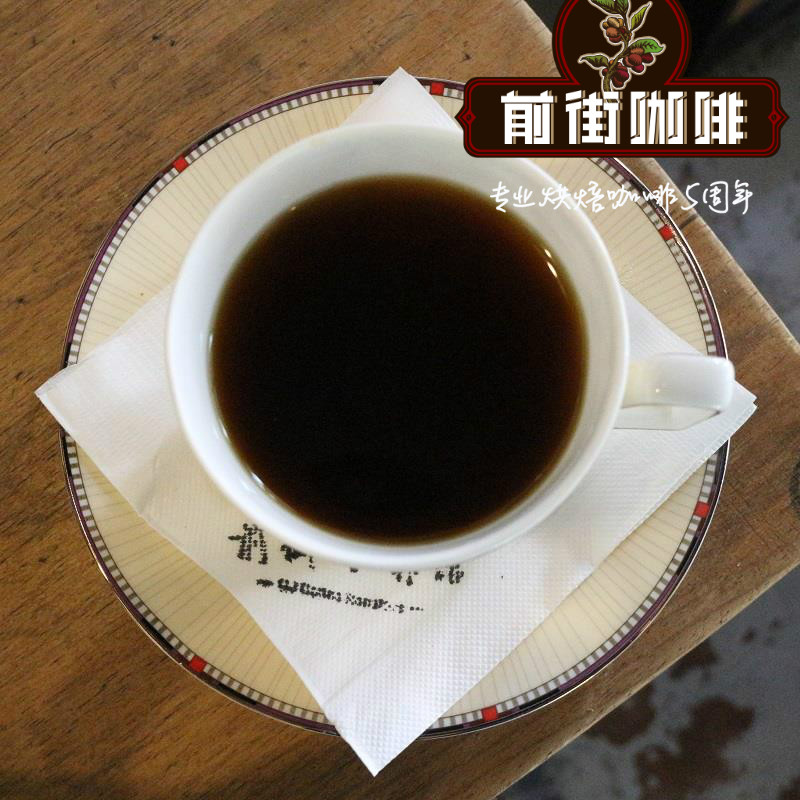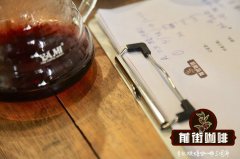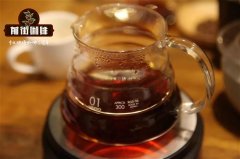What are the famous coffee producing areas in Guatemala? Introduction of El Platanillo Manor in Guatemala

Professional coffee knowledge exchange More coffee bean information Please pay attention to coffee workshop (Weixin Official Accounts cafe_style)
In the past, importers divided coffee into two categories: Brazil and Mild. Brazilian coffee at that time was a negative example: mixed with unripe, overripe or defective beans, treated in unstable sunlight, the coffee produced was difficult to swallow and of poor quality. Guatemala, with its abundant water resources and mechanical technology from Germany, makes the advantages of washing treatment possible. Guatemala Strictly Hard Bean is the best of mild coffee.
The planting environment is changing
Coffee has been cultivated in Guatemala since around 1850. Before World War I, the Germans controlled up to 80% of the country's production, most of which was exported to Germany. The official coffee farmers association ANACAFE divided the country into eight regions in the 1990s based on geography and flavor, and promoted the origin of registered trademarks. These include Antigua, Acatenango, Huehuetenango and Atitlán, where many of the winning farms are located. Common bean varieties in Guatemala today include Typica, Bourbon, Caturra, Catuaí, Pacas, Maragogype, Pacamara (a mixture of the first two), Pache Comum (a local variant of Typica), and Gesha.
San Marcos San Marcos
Guatemala has the warmest climate and the most rainfall coffee producing area. The slopes facing the Pacific receive rain first and thus flower relatively early. Rainfall is abundant and flowers bloom intensively as soon as it rains. Coffee levels in this area fluctuate greatly and are highly correlated with post-harvest processing. At the same time, abundant rainfall poses challenges to the post-harvest drying process. Due to a lot of rainfall, and coffee is still surplus after harvest, sun drying depends on luck. Therefore, some coffee gardens use both natural drying and mechanical drying. Coffee from this region, at high altitudes, has a distinct acidity and sweetness, and if the coffee berries are properly handled, they will have a quite full and unique aroma.
Altitude: 1300-1800 m
Harvest period: December-March of next year
Breeds: Bourbon, Kadura, Kaduai
Acatenango
The coffee growing area is concentrated in the Acatenango Valley, named after the volcanoes that live there. In the past, coffee producers would sell coffee to "coyotes"(coffee buyers, known as coyotes, who drove trucks around buying coffee berries for cash), who would transport the coffee berries to Antigua for processing. Antigua has a higher coffee reputation and therefore can get higher prices. However, this practice is less common now, because Acatenango's own coffee is also good and widely recognized. Now because of the production and marketing history and can get higher profits. The coffee is usually high in acidity and rich in layers.
Altitude:1300-2000 m
Harvest period: December-March of next year
Breeds: Bourbon, Kadura, Kaduai
Coban Coban
The name comes from Coban City. The city thrived on the growth of the powerful German coffee producers, whose influence did not fade until the end of World War II. The dense rainforest also means wet weather, challenging the drying process of coffee. The remoteness of the area makes transportation difficult and costly. However, there is plenty of good quality coffee in the area. Rainforest brings low temperatures, high rainfall, high humidity climate, resulting in its coffee thick and uniform consistency, with fruit and slightly spicy aroma.
Altitude:1300-1500 m
Harvest period: December-March of next year
Breeds: Bourbon, Malagoripi, Kadura, Kaduai, Patch
NuevoOriente New Oriental
Located in eastern Guatemala, near Honduras. The climate here is dry and most coffee is produced by small farmers. The coffee industry did not arrive in the region until the 1950s and developed relatively late.
Altitude:1300-1700 m
Harvest period: December-March of next year
Breeds: Bourbon, Kaduai, Kadura, Patch
Huehuetenango Vivitenango
This is one of the more famous producing areas in Guatemala, and the pronunciation of the regional name is the most interesting. The name comes from the Nahuatl Mahutl, meaning "land of the ancients", and the climate here is quite suitable for coffee cultivation. The region's economy depends on coffee exports, and it produces a lot of amazing coffee. Huehue Highlands, where volcanoes are not distributed, is the highest altitude in Guatemala. It has little rainfall and late harvest. The coffee produced has floral and fruit flavor and has a sense of hierarchy. Mild acidity, mellow touch.
Fraijanes
This coffee-producing plateau surrounds the capital city of Guatemala. The soil in this volcanically active region is fertile, but it occasionally affects human safety and infrastructure. The soil is rich in pumice, which can even be ignited. Unfortunately, the coffee planting area here is gradually reduced due to the change of land use rights for urban development. The coffee in this area is of balanced flavor type, but has more unique aroma and flavor than Antigua.
Altitude:1400-18001 m
Harvest period: December-February of next year
Breeds: Bourbon, Kaduai, Kadura, Patch
Antigua Antigua
Antigua is Guatemala's most famous coffee growing region and one of the world's most famous coffee growing regions. The name of this region comes from Antigua City, which is listed as a UNESCO World Heritage Site due to Spanish architectural civilization. Because of the abuse of the name Antigua in the market, the coffee produced in this area has been devalued, so it became a legal production area (Denomination of Origin) in 2000, and the whole people are "Genuine Antigua Coffee". While this prevents other regions from selling coffee under Antigua's name, it does not prevent fraudulent practices by traders who buy fruit from other regions and process it here. Nevertheless, coffee from this region is easy to obtain a clear record of production and marketing, although some prices are excessively inflated, and this region does produce excellent coffee beans at that time, which is worth a try. This region is virgin for coffee production in Guatemala. Dry climate, sweet coffee with even nutty, spicy and chocolate notes. One of the core beans of Star Dad in the Chinese market is produced here. Ga ga ga--
Altitude:1500-1700 m
Harvest period: January-March
Breeds: Bourbon, Kadura, Kaduai
Atitlan
The area coffee gardens are located around Lake Atilan. Rainfall is slightly higher and humidity is higher. Located at 1500 meters above sea level, the lake area has captured the hearts of writers and tourists over the years. Strong winds blow every day towards noon and afternoon, locally known as xocol, meaning "wind that blows away sin." There are a number of private nature reserves in the area to protect the ecological diversity of the area and prevent deforestation. Previously, the coffee ecology was threatened by rising labor costs and vicious competition. Urbanization is also putting pressure on land, with many farmers finding it more profitable to sell their land than to continue growing coffee. The coffee produced in this area is recognized as a classic of Guatemala: bright and lemon, chocolate, thick and easy to drink. Aroma is obvious, acidity is proportional to altitude, some areas think of unique, chocolate and spice flavor. The quality fluctuates greatly.
Altitude:1500-1700 m
Harvest period: December-March of next year
Breeds: Bourbon, Tibika, Kadura, Kaduai
El Platanillo is situated on the slopes of the Tacana and Tajumulco volcanoes at altitudes ranging from 1,060 to 1,460 meters. Samuel Coto Escobar bought the farm in 1976 and it is now run by his children. El Platanillo is a single and specialized coffee bean that produces the Maragogype Maragogipe variety, commonly known as the "elephant bean". The Maragogipe is one of the so-called "heirloom" varieties, an older tree species cultivated for its unique flavor. A comparable marago gipe tree may yield less than a kilogram of green beans a year, while newer high-yield hybrids in recent years have produced almost three times as much. The quality of the coffee beans from El Platanillo Estate in Guatemala is excellent and consistent every season, giving everyone the opportunity to explore and develop new favorites.
Important Notice :
前街咖啡 FrontStreet Coffee has moved to new addredd:
FrontStreet Coffee Address: 315,Donghua East Road,GuangZhou
Tel:020 38364473
- Prev

Palo Blanco Manor Coffee, Guatemala how is the coffee graded in Guatemala?
Professional coffee knowledge exchange more coffee bean information Please follow Coffee Workshop (Wechat official account cafe_style) the earliest literature points out that Guatemala knew how to grow and drink coffee as early as 1747, and with the establishment of the Coffee cultivation and Promotion Committee in 1845, coffee became an important cash crop in the region. With the vigorous promotion of the government, coffee accounted for the total number of people in Guatemala in 1880.
- Next

What's the difference between Colombian spring manor coffee and other manor coffee? Colombia
Please pay attention to the coffee workshop (Wechat official account cafe_style) Colombia, currently the third largest coffee producer in the world, after Brazil and Vietnam, first planted commercial beans in the 1830s, until coffee accounted for the largest export crop in the 20th century. The mountainous terrain, coupled with a variety of tropical micro-climate, provides an ideal planting environment, with 75% of the total output sold abroad.
Related
- Does Rose Summer choose Blue, Green or Red? Detailed explanation of Rose Summer Coffee plots and Classification in Panamanian Jade Manor
- What is the difference between the origin, producing area, processing plant, cooperative and manor of coffee beans?
- How fine does the espresso powder fit? how to grind the espresso?
- Sca coffee roasting degree color card coffee roasting degree 8 roasting color values what do you mean?
- The practice of lattes: how to make lattes at home
- Introduction to Indonesian Fine Coffee beans-- Java Coffee producing area of Indonesian Arabica Coffee
- How much will the flavor of light and medium roasted rose summer be expressed? What baking level is rose summer suitable for?
- Introduction to the characteristics of washing, sun-drying or wet-planing coffee commonly used in Mantenin, Indonesia
- Price characteristics of Arabica Coffee Bean Starbucks introduction to Manning Coffee Bean Taste producing area Variety Manor
- What is the authentic Yega flavor? What are the flavor characteristics of the really excellent Yejasuffi coffee beans?

